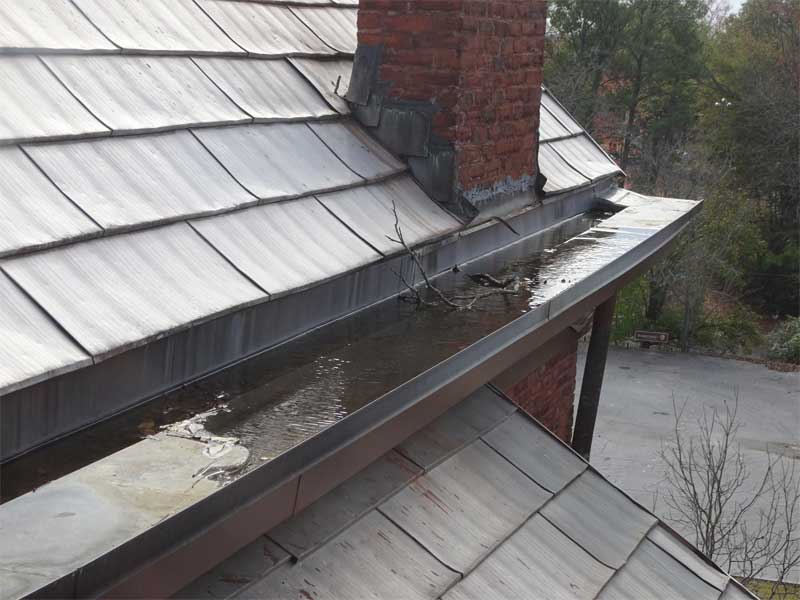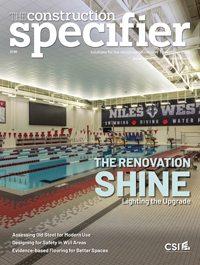When it rains, it overflows


 FAILURES
FAILURES
Deborah Slaton and David S. Patterson, AIA, Mike Ford, AIA
The gutter system tends to be one of the most overlooked components of a building… until it fails. Consisting of a gutter, downspout, and outlet, this system is intended to manage water runoff from the roof, conveying it to the ground where it can be diverted away from the building. Gutter types typically include hung gutters, which are hung from the roof structure, and box (or built-in) gutters independently framed and integrated within the roof assembly, often concealed within a cornice.
Common failures relate to restrictions caused by accumulation of debris and/or undersized gutter components. The potential for restricting flow is also increased when gutters or downspouts contain bends or turns. Water diverted by restricted or undersized gutter systems can cause significant and costly damage, including damage to structural framing members and interior finishes. Usually, the first visual indication of a restricted gutter is water spilling over the edge or running down the outside face of downspouts. In these instances, overflow can be an early and relatively benevolent indicator that something should be investigated and addressed. However, when gutter systems are inadequately designed or installed, they may retain water and conceal the effects of a restricted water path. In these situations, more severe distress such as interior water leakage or structural issues may be the first indication of a gutter problem.

Photo courtesy Mike Ford
In the example shown, the downspout was restricted due to leaves and debris from a nearby tree, resulting in deterioration of brick and mortar adjacent to the downspout due to rundown of water overflowing the gutter system. Installed with a 90-degree bend, the downspout was undersized to accommodate water runoff from the roof area. At the interior of the building, resultant water leakage caused damage to interior finishes as well as deterioration of wood framing members.
Gutters and downspouts should be sized for the roof area, pitch, and rainfall patterns for the region in which the building is located. The Sheet Metal & Air Conditioning Contractors’ National Association (SMACNA) provides guidelines for calculating the size of gutters and downspouts. Consideration should be given to installing more than one downspout per length of gutter or other mechanisms to provide secondary paths for water runoff, and incorporating features to limit accumulation of debris.
Regardless of design or supplemental features, routine and seasonal maintenance, cleaning, and assessment of gutters is the best way to avoid potential problems and address related conditions before they become serious.
The opinions expressed in Failures are based on the authors’ experiences and do not necessarily reflect those of The Construction Specifier or CSI.
Deborah Slaton is an architectural conservator and principal with Wiss, Janney, Elstner Associates (WJE) in Northbrook, Illinois, specializing in historic preservation and materials conservation. She can be reached at dslaton@wje.com.
David S. Patterson, AIA, is an architect and senior principal with WJE’s office in Princeton, New Jersey. He specializes in investigation and repair of the building envelope. He can be reached at dpatterson@wje.com.
Mike Ford, AIA, is an architect and senior associate with the Northbrook office of WJE, specializing in investigation and historic preservation. He can be reached at mford@wje.com.


